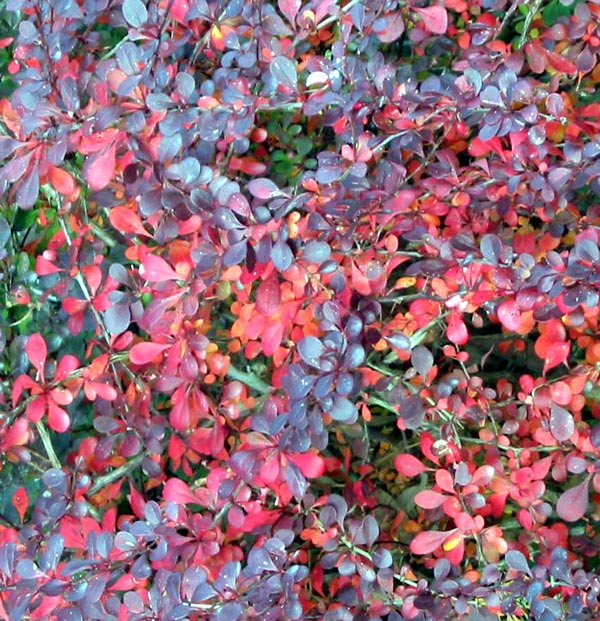Berberis
[size=75]From Wikipedia, the free encyclopedia [/size]
About 450-500; see text
Berberis (Bér-be-ris, barberry, pepperidge bush) a genus of about 450-500 species of deciduous and evergreen shrubs from 1-5 m tall with thorny shoots, native to the temperate and subtropical regions of Europe, Asia, Africa, North America and South America. They are closely related to the genus Mahonia, which is included within Berberis by some botanists.
The genus is characterised by dimorphic shoots, with long shoots which form the structure of the plant, and short shoots only 1-2 mm long. The leaves on long shoots are non-photosynthetic, developed into three-spined thorns 3-30 mm long; the bud in the axil of each thorn-leaf then develops a short shoot with several normal, photosynthetic leaves. These leaves are 1-10 cm long, simple, and either entire, or with spiny margins. Only on young seedlings do leaves develop on the long shoots, with the adult foliage style developing after the young plant is 1-2 years old.
The deciduous species (e.g. Berberis thunbergii, B. vulgaris) are noted for good autumn colour, the leaves turning pink or red before falling. In some evergreen species from China (e.g. B. candidula, B. verruculosa), the leaves are brilliant white beneath, making them particularly attractive.
The flowers are produced singly or in racemes of up to 20 on a single flower-head. They are yellow or orange, 3-6 mm long, with six sepals and six petals in alternating whorls of three, the sepals usually coloured like the petals. The fruit is a small berry 5-15 mm long, ripening red or dark blue, often with a pink or violet waxy surface bloom; they may be either long and narrow (like a bar, hence ‘barberry’) or in other species, spherical.
The berries are edible, and rich in vitamin C, though with a very sharp flavour; the thorny shrubs make harvesting them difficult, so in most places they are not widely consumed. They are an important food for many small birds, which disperse the seeds in their droppings. In Iran, the dried fruits, known as zereshk, are more widely used, imparting a tart flavor to chicken dishes. In Ukraine, they are used as the flavouring in a popular candy of the same name.
Berberis species are used as food plants by the larvae of some Lepidoptera species including Mottled Pug.
Several are popular garden shrubs, grown for their ornamental leaves, yellow flowers, and red or blue-black berries. They are also valued for crime prevention; being very dense, viciously spiny shrubs, they make very effective barriers impenetrable to burglars. For this reason they are often planted below potentially vulnerable windows, and used as hedges and other barriers.
Berberis buxifolia (Calafate) and Berberis darwinii (Michay) are two species found in Patagonia in Argentina and Chile. Their edible purple fruits are used for jams and infusions; anyone who tries a berry is said to be certain to return to Patagonia. The calafate and michay are symbols of Patagonia.

